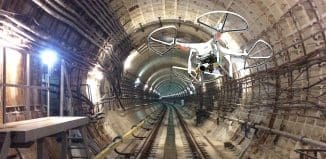The Modern Day A-Team
This post is also available in:  עברית (Hebrew)
עברית (Hebrew)
Lockheed Martin demonstrated for the first time how its models of optionally-piloted helicopters and small UAS can work together to successfully locate and extinguish fires, pinpoint the location of a missing person, and bring that person to safety.
Dan Spoor, vice president of unmanned systems at Lockheed Martin: “When lives are at risk, advanced human-machine teams can complete dangerous missions without putting others in harm’s way”.
All along the demonstration, optionally piloted Kaman K-MAX and the Sikorsky Autonomy Research Aircraft (SARA) engaged in collaborative firefighting as well as search-and-rescue with the Indago quadrotor and Desert Hawk 3.1 fixed wing unmanned aircraft system (UAS) providing information.
Also during the demonstration, the Indago relayed information to an operator who directed a K-MAX to autonomously retrieve water from a nearby pond and drop it onto the fire, thus extinguishing the flames.
The Desert Hawk identified the location of a missing person and SARA, a modified S-76 commercial helicopter, conducted the search and directed the rescue. According to the company’s press release, the Sikorsky MATRIX technology on SARA gave operators the confidence to fly a large rotorcraft safely, reliably and affordably as an autonomous or optionally piloted aircraft.
“Our goal is to support the integration of autonomy into aviation to improve the safety and capabilities for military and commercial missions. Utilizing new technologies to support the mission in this demonstration highlights an example of the ability to reduce pilot workload and enhance mission performance,” said Mark Miller, vice president, engineering and technology, Sikorsky, a Lockheed Martin Company.
The New York UAS Test Site Operations Center at Griffiss International Airport also demonstrated progress toward UAS Traffic Management. The center uses radars and sensors to enable the tracking of manned, unmanned and optionally-piloted aircraft systems.
“UAS traffic management must keep pace with the technology innovations that are bringing helicopters to the sky with a laptop or tablet,” said Lawrence Brinker, executive director & general counsel of the NUAIR Alliance. “The progress that has been made through the collaboration of federal agencies and companies like Lockheed Martin, will pave the way to help the Federal Aviation Administration safely manage air traffic without on-board pilots.”





























